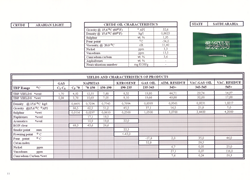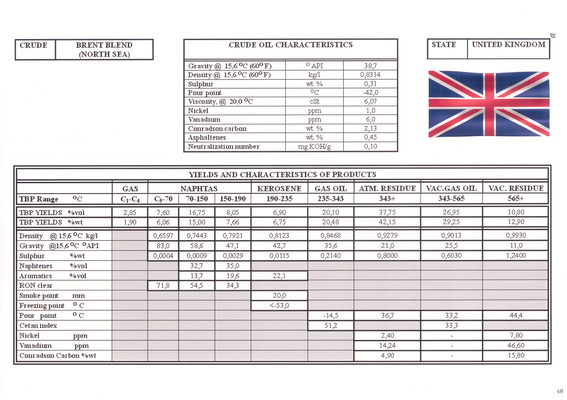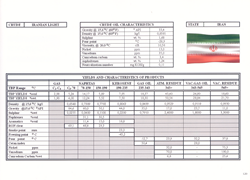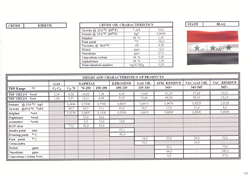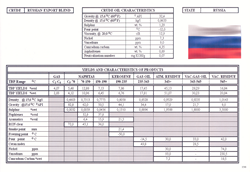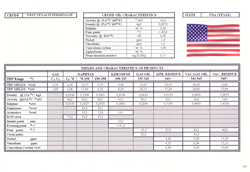Book Info
.: Crude Oil Assey :.INA, 2001.
160x230 mm
Hard Cover
Full Color
xxx Pages
Price: 50 €*
(* Shipping Not Included)
You can download Contents of book here.
You can download the References here.
Shipping
| Geographical Region | Shipping Rates(€) | Delivery (business days) |
| Europe | 11,50 | 3-12 days |
| USA/Canada | 15,00 | 10-20 days |
| Rest of the World | 17,50 | 15-20 days |
Order and payment (hard or digital copy)
| Orders via email payment via bank transfer | |
| BANK TRANSFER | |
| Name: | Emir Ceric |
| SWIFT: | PBZGHR2X |
| Bank account number: | HR 47 2340 0093216715420 |
Crude Oil Assey
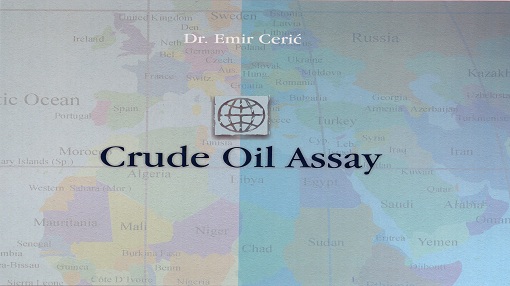
: Review
The crude oil data contained in this handbook and the database on various types of crude recorder by 1999, have been prepared on the basis of variety of crude oil samples and information gathered from various sources, including national and private oil companies, as well as on the basis of the data obtained from a number of projects INA and its laboratories carried out since 1969 for other refineries and oil industries all around the world. In most cases several sources were available for specific crude oil. All these data were analyzed and crosschecked. On the basis of results obtained by such analyses and our expertise, the most accurate data have been provided for each type of crude oil.
The database contains information on properties of majority of crude oil received at the Rijeka Refinery which is linked with the JANAF crude oil pipeline. However, there are also data on other types of crude oil tested and analyzed by INA's laboratories upon order by other buyers, refineries, insurance companies, quality control associations or for the purpose of some projects. In some cases the values indicated in the database have been derived from other refined products, their properties and yields. In order to ensure the satisfactory level of accuracy, so derived data were compared with the original crude oil data.
As it is important to have an update version of the Assay Handbook, during the last five years efforts were focused on recording any change in valves and properties of various types of crude. For this purpose old data were compared with the new sources. The most recent changes are presented in the appendix to this Assay Handbook. This Assay Handbook can be used by any oil company, bank or finance institution dealing with oil industry projects, education institutions like colleges and universities, engineering companies, shipping and cargo control companies, port authorities or any government institution involved in oil related projects or businesses.
:: About the Author
Emir Cerić was born in 1944. He graduated from Faculty of Chemical Engineering and Technology, University of Zagreb, specializing in petroleum-petrochemicals. At the same technical faculty, University of Zagreb he obtained his master's degree in 1976, while his Ph.D. in Chemical Engineering he obtained in 1979. He has been working for INA Refinery of Rijeka since 1968. He has got a rich experience working in industry, as a manager of various unit groups, start-up engineer at the units, as follows:
- 1. Base oil hydro-treatment.
- 2. Dewaxing & Deoiling
- 3. C5/C6 isomerization process .
- 4. Thermal hydro-dealkylation (Hydeal).
- 5. Atmospheric Distillation.
- 6. Visbreaking.
- 7. HDS/MHC,
Chief engineer in Development Department, Director of Development and Research Department, Director of INA Refining division. He gave lectures from "Petroleum Technology" at Technological Faculty in 1981, and "Base Oil Technology" at Zagreb Business School in 1992. He is a member of Croatian Society for Fuels and Lubricants, Croatian National Committee of World Petroleum Congresses, and a regular member of Scientific Council for Petroleum of the Croatian Academy of Sciences and Arts in Zagreb. He provided a great number of elaborates and studies dealt with petroleum production. He is also the author of various development concepts of INA Rijeka Refinery for the period 2000 - 2010 ,and INA Refining division in period 2002-2010.He is the author of the books as stated below:
- 1. "Tehnologija nafte" (Petroleum Technology), Školska knjiga Zagreb, 1984.
- 2. "Tehnologija proizvodnje baznih ulja" (Technology for Producing Base Oils), INA Rafinerija Rijeka, 1994.
- 3. "Crude Oil Assay", INA Industrija nafte, Zagreb, 2001.
- 4. "Nafta, procesi i proizvodi" (Crude oil, Processes and Products), INA Industrija nafte & Kigen d.o.o Zagreb, 2006.
- 5. "Crude oil, processes and products" , IBC & Petrolinvest Sarajevo, 2012.
- 6. "Nafta procesi i proizvodi", IBC, Sarajevo, 2012.
Over 40 of his scientific papers were published at home and abroad, as well as more than 10 units operating manuals for safe work. He took active role participating in over 30 congresses at home, but worldwide as well.
